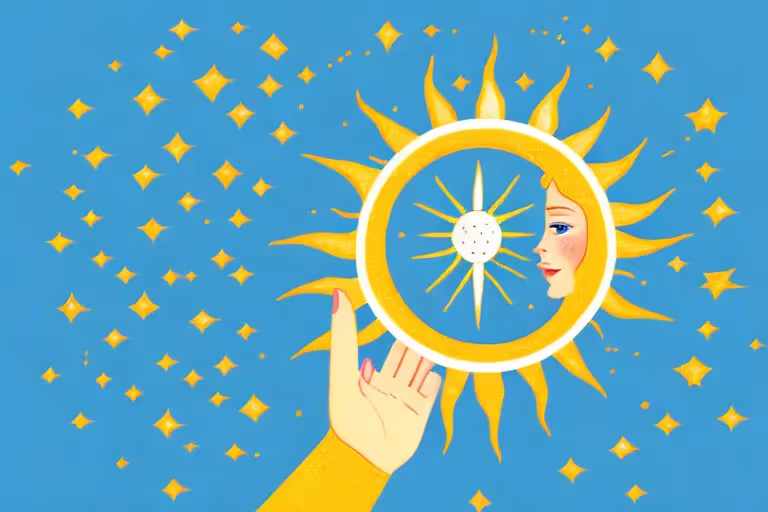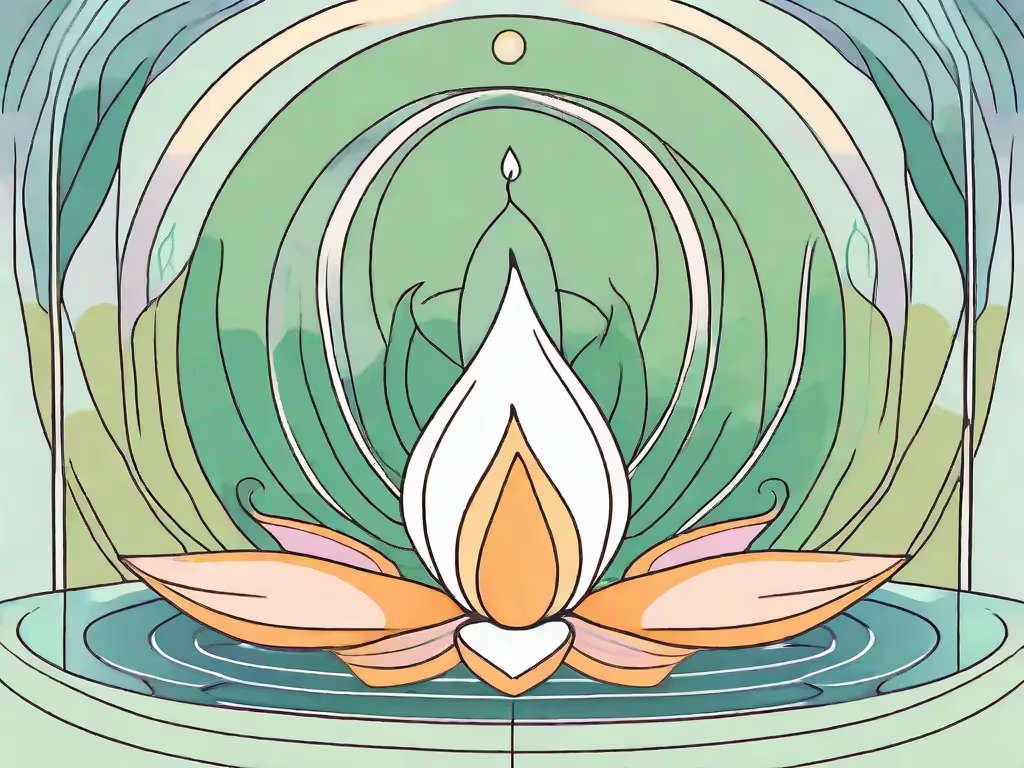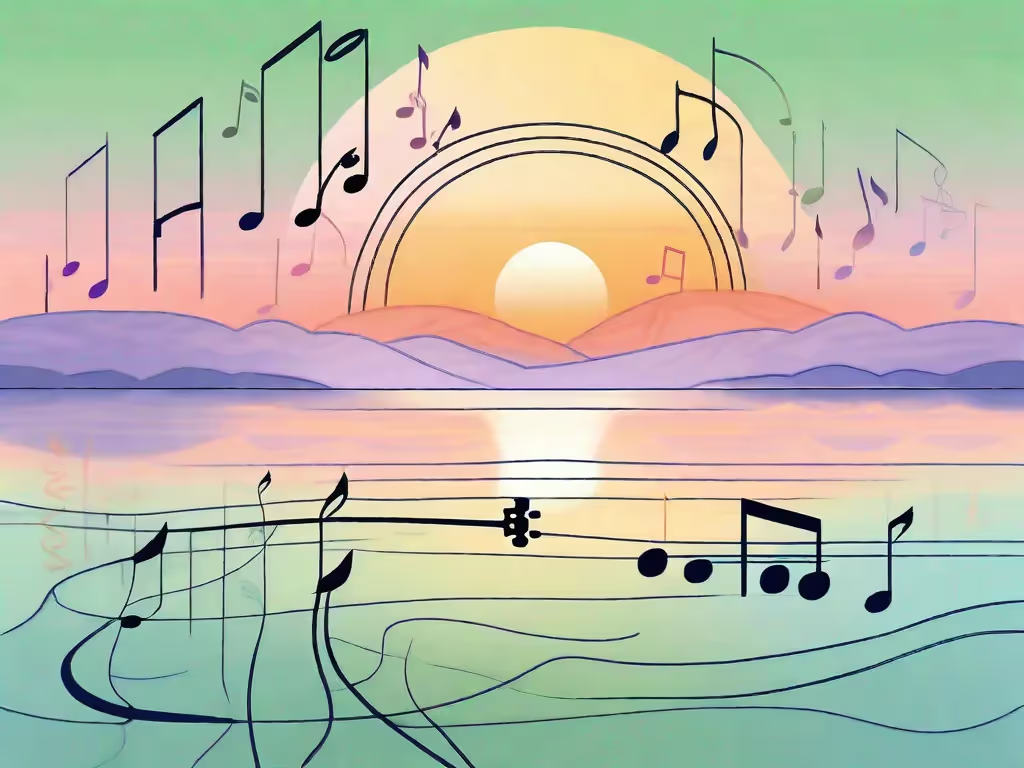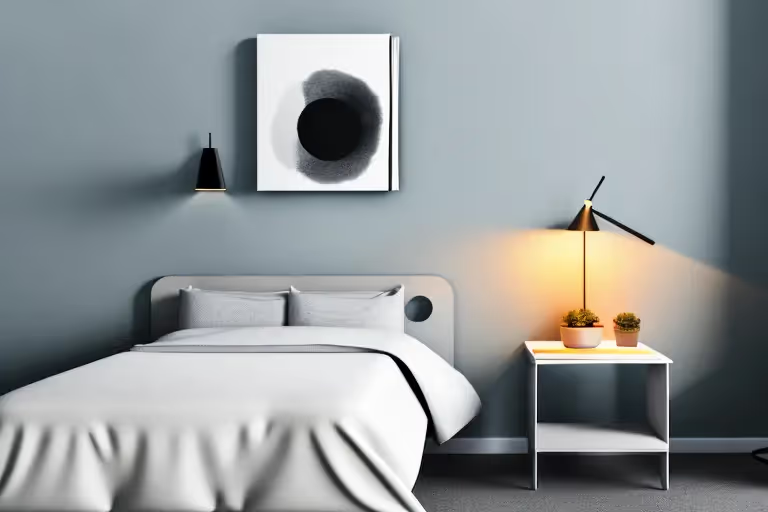Visualization, or the process of creating mental images and scenarios, is a powerful technique that can yield numerous health benefits. Chief among these benefits is the promotion of relaxation and the reduction of stress. This concept may seem abstract or somewhat mystical, but scientific evidence and practice-based results strongly support its efficacy. This comprehensive article will clarify what visualization is, how it connects with relaxation, and its role in stress reduction. Furthermore, we will delve into how to best incorporate visualization into your daily routine, examine real-life examples and case studies, and consider the future implications and challenges of this practice.
Understanding the Concept of Visualization
Visualization is a mind-body technique that involves the use of one's imagination to create mental images or scenarios. It is a powerful tool that can have consequential effects on one's physical and psychological condition. By engaging the brain and the body in a way that simulates real experiences, visualization has the potential to bring about positive changes in various aspects of life.
What is Visualization?
While visualization is a broad term used across numerous contexts, it commonly falls into two main categories: creative visualization and guided imagery. These techniques, both of which are widely used in therapeutic settings, emphasize the interaction between the mind and body, and the integrative nature of our cognition, emotions, and physical sensations.
Creative visualization involves using one's imagination to create vivid mental images of desired outcomes or goals. By visualizing success and positive experiences, individuals can enhance their motivation, focus, and overall well-being. It is a technique often utilized in sports psychology, where athletes mentally rehearse their performances to improve their skills and increase their chances of success.
Guided imagery, on the other hand, involves following a structured script or audio recording that directs the individual's imagination towards a specific goal or desired state. This technique is commonly used in relaxation exercises, stress reduction, and pain management. By guiding the mind through pleasant and calming scenarios, guided imagery helps individuals achieve a state of deep relaxation and mental clarity.
Aura has the world’s largest and best collection of Meditations and hundreds of Coaches to choose from.
Try it Free!
The Science Behind Visualization
From a scientific viewpoint, visualization works by influencing the brain's neural networks, triggering physiological responses similar to those generated from actual experiences. This is based on the premise that the brain sometimes struggles to differentiate between real and imagined scenarios.
One of the primary areas of the brain involved in this phenomenon is the reticular activating system (RAS), which plays a pivotal role in our consciousness and our ability to focus attention. The RAS acts as a filter, determining which sensory information reaches our conscious awareness. When we engage in visualization, the RAS is activated, and the brain processes the imagined scenarios as if they were real.
Through consistent and repeated practice, we can effectively train our brain to respond in specific ways to visualized scenarios. For example, athletes who visualize themselves performing at their best activate the same neural pathways that are activated during actual physical practice. This leads to improved muscle memory, enhanced performance, and increased confidence.
Moreover, visualization has been found to have a positive impact on emotional well-being. By visualizing positive experiences, individuals can activate the brain's reward system, releasing neurotransmitters such as dopamine and serotonin, which are associated with feelings of pleasure and happiness. This can help reduce stress, anxiety, and depression, promoting a more positive outlook on life.
In conclusion, visualization is a powerful technique that harnesses the mind's ability to create mental images and scenarios. By understanding the concept and science behind visualization, individuals can utilize this technique to enhance various aspects of their lives, from achieving goals and improving performance to managing stress and promoting emotional well-being.
The Connection Between Visualization and Relaxation
Visualization has long been recognized as an effective technique for promoting relaxation. It has the remarkable ability to affect physiological processes such as heart rate and blood pressure. By generating mental images of peaceful scenarios, we can stimulate our brain to produce relaxation responses, helping us unwind and reduce anxiety levels.
But how does visualization induce relaxation? When we engage in visualization, we activate the same neural pathways that are involved in experiencing the actual event. This means that when we vividly imagine ourselves in a tranquil setting, our brain responds as if we were physically there. As a result, our body releases endorphins, which are natural stress-relieving chemicals, and our heart rate slows down, promoting a state of calmness.
Additionally, visualization gives us the headspace to detach from stressors in our immediate surroundings. It allows us to mentally transport ourselves to more serene environments, such as a peaceful beach or a lush forest. By immersing ourselves in these mental landscapes, we can escape the hustle and bustle of daily life, providing a much-needed respite for our mind and body.
The Role of Visualization in Mind-Body Connection
The significance of visualization in fostering relaxation goes beyond its ability to induce calmness. It also plays a crucial role in strengthening the mind-body connection. This connection is rooted in the understanding that our mental processes at any given moment can substantially affect our physical state.
When we practice visualization for relaxation, we become more attuned to the signals our body sends us. We develop a heightened awareness of how our thoughts, emotions, and physical sensations are interconnected. This awareness allows us to gain more control over our physical and emotional states, consequently leading to better stress management.
Moreover, visualization acts as a powerful tool for "pre-programming" our bodies to respond in more balanced and calm ways to stressful situations. By repeatedly visualizing ourselves handling challenging scenarios with composure and grace, we train our brain and body to react in a similar manner when faced with real-life stressors. This reinforces the mind-body connection and enhances our overall wellness.
In conclusion, visualization is not just a simple technique for relaxation. It has profound effects on our physiological and psychological well-being. By harnessing the power of our imagination, we can create a sanctuary of tranquility within ourselves, promoting relaxation and strengthening the mind-body connection.
Visualization as a Tool for Stress Reduction
The Impact of Visualization on Stress Levels
Many studies have affirmed the efficacy of visualization in reducing stress levels. Visualization techniques, which often involve picturing oneself successfully navigating stressors or tension-filled scenarios, can prepare the mind and body to better cope with actual stressful situations when they occur.
For example, imagine yourself in a stressful work meeting. By visualizing yourself confidently presenting your ideas and calmly responding to any challenges or objections, you can train your brain to respond in a more composed and collected manner when facing similar situations in real life. This mental rehearsal helps to reduce anxiety and increase self-assurance.
Moreover, visualization can have a profound impact on both our emotional and physiological well-being. When we imagine ourselves in peaceful and relaxing environments, such as a serene beach or a tranquil garden, our bodies respond by releasing endorphins and reducing the production of stress hormones like cortisol. This not only improves our mood but also helps to lower blood pressure and heart rate, promoting a healthier response to stress.
Techniques for Using Visualization for Stress Reduction
Effective use of visualization as a stress reduction tool requires regular practice and application of certain techniques. These techniques can help enhance the effectiveness of visualization and make it a powerful tool in managing stress.
Firstly, it is important to set aside specific times for relaxation and visualization. By dedicating a portion of your day to this practice, you create a consistent routine that allows your mind and body to fully engage in the visualization process.
Choosing a quiet and comfortable place is also crucial for effective visualization. Find a space where you can be free from distractions and interruptions. It could be a cozy corner in your home, a peaceful park, or even a quiet room in your office during a break. Creating a serene environment helps to enhance focus and concentration during visualization exercises.
Adopting a comfortable posture is another key aspect of visualization. Whether you prefer sitting or lying down, ensure that your body is in a relaxed position. This will help promote a sense of calmness and ease, allowing you to fully immerse yourself in the visualization experience.
Incorporating deep breathing exercises into your visualization practice can further enhance its stress-reducing benefits. Deep breathing helps to activate the body's relaxation response and promotes a state of calmness. As you inhale deeply, imagine filling your lungs with positive energy, and as you exhale, visualize releasing any tension or stress that you may be holding onto.
Lastly, when engaging in visualization, it is important to focus on positive images or scenarios. Visualize yourself successfully overcoming challenges, achieving your goals, or simply experiencing moments of joy and contentment. By focusing on positive imagery, you train your mind to associate stress with positive outcomes, thereby reducing its impact on your overall well-being.
By making these techniques a part of your daily stress management routine, you can maximize the stress-reducing benefits that visualization has to offer. Remember, the more you practice and engage with visualization, the more effective it becomes in helping you navigate stress and cultivate a sense of inner peace.
The Benefits of Visualization for Overall Well-being
Visualization is a powerful technique that has been used for centuries to promote overall well-being. It involves using the power of the mind to create vivid mental images and scenarios, which can have a profound impact on both physical and mental health. The benefits of visualization extend beyond stress reduction to encompass an array of physical health improvements as well as mental health benefits.
Physical Health Benefits of Visualization
The benefits of visualization on physical health are numerous and significant. One of the key advantages is its ability to improve immune function. When we visualize ourselves in a healthy and vibrant state, our mind sends signals to our body, triggering a cascade of physiological responses that strengthen our immune system. This, in turn, helps us fight off illnesses and infections more effectively.
In addition to boosting immune function, visualization has also been found to lower blood pressure. By engaging in regular visualization exercises, individuals can visualize their blood vessels expanding and blood flowing smoothly, which helps to reduce hypertension and promote cardiovascular health.
Furthermore, visualization has been shown to enhance surgical recovery. Studies have found that patients who practice visualization techniques before and after surgery experience less pain, have shorter hospital stays, and recover more quickly. By visualizing a successful and smooth recovery, individuals can tap into the power of their mind to facilitate the healing process.
Pain management is another area where visualization can be immensely beneficial. By visualizing a decrease in pain and focusing on sensations of comfort and relief, individuals can effectively manage and alleviate pain. This technique has been particularly effective for individuals with chronic pain conditions, providing them with a non-pharmacological tool to improve their quality of life.
Mental Health Benefits of Visualization
Visualization is not only beneficial for physical health but also has a profound impact on mental well-being. By engaging in regular visualization practice, individuals can experience a range of mental health benefits.
One of the primary advantages of visualization is its ability to induce relaxation and reduce stress. When we visualize peaceful and calming scenes, our mind and body respond by releasing feel-good hormones and lowering stress hormones. This can help to alleviate symptoms of anxiety and depression, promoting a greater sense of calm and emotional well-being.
In addition to stress reduction, visualization also contributes substantially to enhancing self-confidence. By visualizing success, individuals can build a strong belief in their abilities and increase their self-esteem. This can have a positive impact on various aspects of life, from personal relationships to professional endeavors.
Moreover, visualization can be a powerful tool for promoting emotional well-being. By visualizing positive experiences, individuals can cultivate feelings of joy, gratitude, and contentment. This can lead to a more positive outlook on life and a greater sense of overall happiness and fulfillment.
In conclusion, visualization is a valuable practice that offers a wide range of benefits for overall well-being. Its ability to improve physical health, reduce stress, enhance self-confidence, and promote emotional well-being makes it a powerful tool for individuals seeking to enhance their quality of life.
Practical Steps to Incorporate Visualization into Your Routine
Visualization is a powerful tool that can help you achieve your goals and improve your overall well-being. Whether you are a beginner or an advanced practitioner, there are practical steps you can take to incorporate visualization into your daily routine.
Beginner's Guide to Visualization
If you're just starting with visualization, simplicity is key. Begin by finding a quiet and comfortable space where you can relax and focus. Set aside a few minutes each day to practice visualization. Close your eyes and imagine yourself in a peaceful scene, like a serene beach or a tranquil forest.
As you visualize, try to engage all your senses. Feel the warmth of the sun on your skin, hear the gentle sound of waves crashing, and smell the fresh scent of nature. The more vividly you can imagine these details, the more powerful your visualization will become.
As your comfort with visualization grows, you can progressively increase the amount of time you dedicate to this practice. Start with just a few minutes and gradually extend it to longer sessions. You can also supplement simple visualizations with more complex ones. Imagine yourself achieving specific goals or visualizing your ideal future.
Advanced Techniques for Effective Visualization
For those who are already comfortable with visualization, there are advanced techniques that can deepen the beneficial effects of this practice. As you grow more adept at creating visual imagery, it's important to incorporate other senses into your visualizations.
Try to imagine not only what you see, but also what you hear, smell, taste, and touch. For example, if you are visualizing yourself on a beach, imagine the sound of seagulls, the smell of saltwater, the taste of a tropical fruit, and the sensation of warm sand beneath your feet. This multisensory approach enhances the realism of your visualized scenarios, bolstering their efficacy and impact.
Another advanced technique is to incorporate emotions into your visualizations. Imagine how you would feel once you have achieved your goals or experienced your desired outcome. Feel the joy, excitement, and fulfillment as if it has already happened. This emotional connection can amplify the power of your visualization and align your subconscious mind with your conscious desires.
Remember, visualization is a practice that requires consistency and dedication. The more you incorporate it into your daily routine, the more you will experience its benefits. So, take the time each day to visualize your goals, dreams, and desires, and watch as they manifest in your life.
Real-life Examples and Case Studies of Visualization
Success Stories of Visualization for Relaxation
There are numerous instances of individuals using their power of visualization to elicit relaxation. These success stories often emerge from high-stress environments such as competitive sports or rigorous professional fields, demonstrating the broad usefulness of this technique is in managing stress and fostering relaxation.
Case Studies of Stress Reduction Through Visualization
In addition to anecdotal evidence, scores of scientific studies corroborate the efficacy of visualization for stress reduction. These studies often involve controlled experiments that measure physiological responses to stress before and after visualization exercises, consistently demonstrating the positive impact of visualization practice on managing and mitigating stress.
Conclusion: Embracing Visualization for a Stress-free Life
Overcoming Challenges in Visualization Practice
Like any new practice, beginning and maintaining a visualization routine can present some hurdles. These may include difficulties in setting aside time for this practice, struggling with focus, or feeling uncertain about the effectiveness of the process. However, these challenges can be mitigated by starting small, being patient, and consistently practicing.
The Future of Visualization in Stress Management
Given the increasing body of research promoting its benefits, the future of visualization in stress management appears promising. As traditional and digital health platforms continue to integrate visualization techniques into their offerings, it's clear that this powerful mind-body tool will continue to gain momentum in health and wellness spaces.
To conclude, far from being a mystical or abstract concept, visualization is a practical and effective tool to promote relaxation and reduce stress. It's a technique grounded in brain science and supported by extensive research and real-life success stories. Embracing visualization offers the chance to enhance your mind-body connection, achieve a better balance in your emotional and physical states, and cultivate a healthier, stress-free life.
In the quest to refine and practically apply these visualizations, the Aura Health App is an invaluable tool. It delivers guided meditations, life coaching, music, and stories - all personalized just for you to immerse in an uplifting experience. With the Aura App, visualization becomes more accessible, enabling you to unlock the full potential of your mind and embark on a journey towards a more relaxed and stress-reduced life.
Aura is Your All In One App for Meditation, Mindfulness Wellbeing
Find peace every day with one app for your whole well-being. There is no one-size-fits-all solution to mental well-being. Aura is the first all-in-one wellness app that learns how to best help you. Discover an endless library of expert-created tracks for your well-being, all taught by the world’s best coaches, therapists, and storytellers. With Aura's personalized recommendations, you can find peace every morning, day and night.



.webp)






.avif)

%20(1).avif)


.avif)
.avif)
.webp)


.avif)


















































































































.avif)

















.svg)









